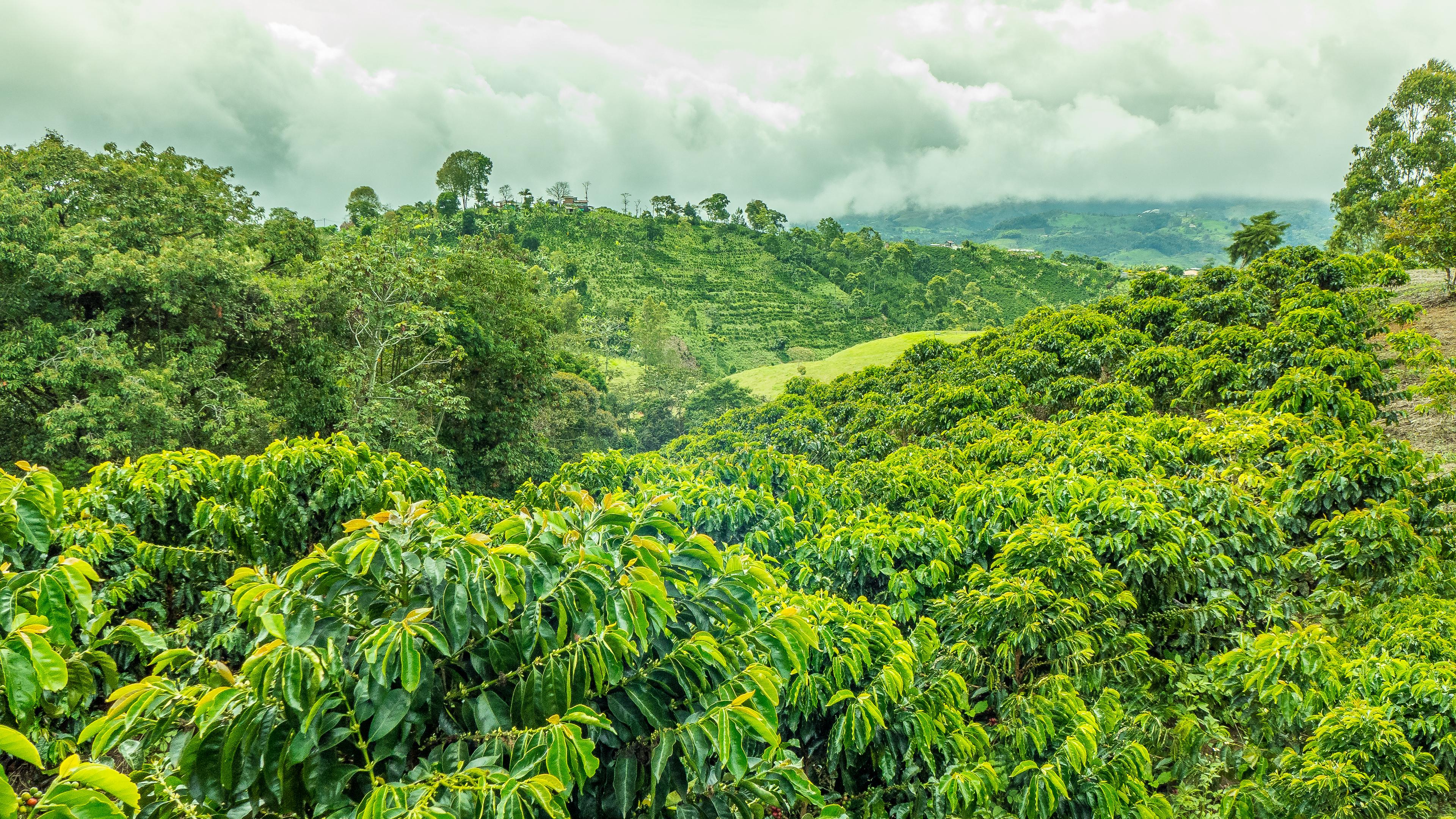03/02/2022
Varginha, Currency, Herb: How Changing Weather Patterns Created a Brazil Coffee Shortage Which Damages the Local Economy
Coffee plants are sensitive to weather. A cold year in one of the world’s largest coffee-producing areas is causing high costs, and the forecast suggests this will continue to be a problem.
Coffee plants need a balanced climate to thrive perfectly. Too much sunshine and temperatures above 30°C or below 10°C make the plant suffer and have a negative effect on the harvest. Average annual temperatures of 18-25°C are ideal. Arabica and Robusta beans both love the warm, humid areas around the equator, but Arabica can also tolerate slightly cooler temperatures, provided the weather remains consistent. These conditions are typically achieved in the tropics i.e. between 25°N and 25°S.
The optimum soils for high-yield coffee cultivation are deep, loose, well aerated and permeable to water. Nitrogen, potassium and phosphoric acid provide an ideal supply of nutrients for the plants.
In addition, humus-rich soil and a neutral to slightly acidic pH are advantageous for coffee cultivation. Taken together, the ideal conditions for growing coffee are mainly found in South America, Africa, and Oceania. The world's largest coffee producers are Brazil, Vietnam and Indonesia, followed by Colombia, Ethiopia and Peru.
The largest coffee producing region in Brazil is the Varginha area in the state of Minas Gerais. Historically it has had almost perfect conditions, with average temperatures between 14 and 25 degrees and favorable humidity and precipitation. This is where 70 percent of Brazilian Arabica beans come from, as well as most of German coffee imports. Therefore, this area is very relevant not only for the Brazilian economy, but also for global coffee production and related market developments.
Sadly, recent trends likely associated with changing climates have affected the reliability of the coffee economy in Varginha. The region experienced a consistently cold (Austral) winter season in 2021, damaging the crop and leading to a coffee shortage.
A systematically colder-than-average July/August in 2021, which featured a number of drops below an Arabica-threatening threshold of 5°C, caused production in the Varginha region to drop by 25% this year.
In figure 1 we can see the actual temperature in the region in late July 2021. In the two-and-a-half-week period, the temperature was systematically colder than the 10 year average, and saw two cold snaps during which the mercury dropped beneath a temperature threshold of 5°C – very dangerous for Arabica plants. The result was a 25% drop in productivity in the region compared with the previous year.
The balance of supply and demand is at the heart of economics. With the decrease in production, the cost of Arabica has soared to a 12-year peak in the West due to the shortage. However, the majority of the cost of a cup of coffee to a western consumer consists of tariffs, taxes and transport costs; the increase in price does not often propagate back to the farmers and plantation operators in Brazil.
ECMWF ensemble forecast for precipitation in the Varginha area in the coming Austral winter season, showing drier than usual conditions with very little ensemble spread i.e. high confidence.
Unfortunately, the outlook for the coming (Austral) winter season implies that the crop will struggle again this year. In figure 2 we can see that the majority of ECMWF ensemble members predict very little rain throughout the winter months, and that the mean rainfall throughout March is also predicted to be less than the 10-year mean.
Daily median temperatures and ensemble spread for the coming Austral autumn- and winter season, showing that the previous season has already been significantly colder than usual, as well as a high degree of confidence that the next 4-5 months will be systematically colder than the long-term average.
Figure 3 similarly shows that the majority of ensemble scenarios predict a colder than average season. Although possibly milder than that of 2021, figure 4 shows that there is a non-zero chance of overnight frosts throughout June.
Ensemble members (scatter points) and their statistical properties (box plots) from ECMWF forecasts for June 2022. Mean temperatures are expected to be colder, and although not guaranteed, the chance of dropping below the critical 5°C threshold at night cannot be ruled out.
Were the outlook more positive, we might expect productivity in the region to bounce back by 2023; as it stands, the effect of two consecutive bad harvests is likely to damage the crop and soil quality, which will likely not recover before 2024. Because of the insecurity of income on the producer side, the cash required to purchase equipment, such as artificial fertilizer, is limited by the poor harvest already experienced.
Instead of being able to invest in the area, which would restore the soil in the region and allow the economy to bounce back, many farmers this year will be forced to abandon their plantations altogether. The effects of such behavior are difficult to forecast but it is reasonable to assume that Varginha may see long term effects to its coffee industry, which will in turn impact the global coffee economy.
Expert Call
Let’s Find the Perfect Solution to Your Problem. Talk to an Expert.
We provide the most accurate weather data for any location, at any time, to improve your business.
